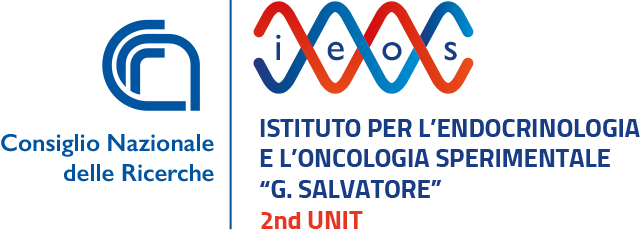Function and regulation of ER-TGN membrane contact sites- Prof. Rossella Venditti- TIGEM and Department of Molecular Medicine and Medical Biotechnologies – University of Naples Federico II
Abstract : Eukaryotic cells are organized in membrane-bound organelles responsible for segregation of cellular functions. Those organelles preserve their identity through the continuous flux of lipids and proteins that relies on several mechanisms: cytosolic exchange, vesicular trafficking and local synthesis. This is particularly true for the endoplasmic reticulum (ER) where these mechanisms cooperate to maintain its stability and functionality. The lipid repertoire in eukaryote cells comprises a wide variety of species. Membrane lipids not only behave as physical boundaries for each organelle, but also ensure specific requirements critical for executing organelle function. To this end, the lipid composition differs between organelles and the diverse lipids are unevenly distributed between the membrane bilayers. The compartmentalization of biochemical reactions and processes in these organelles, although necessary, also raises the issue of inter-organelle communication, that must rely on molecular mechanisms which ensure their coordinated activity. In addition to vesicular transport, membrane contact sites (MCSs) have been identified as a crucial route for inter-organellar exchange of proteins, ions and lipids. MCSs are sites where different organelles come into close apposition (10-30 nm) without fusing. Among all the ER-mediated contcts sites, we focused our attention on the study of the ER-TGN contacts. The ceramide transfer protein CERT is responsible for the non-vesicular transfer of ceramide from the endoplasmic reticulum (ER) to the TGN, where ceramide is converted into sphingomyelin. The ceramide transfer operated by CERT occurs at ER-TGN MCSs where CERT is targeted via an ER interacting motif (i.e. the FFAT motif interacting with the ER proteins VAPs) and a Golgi interacting domain (i.e. a PI4P-binding PH domain). We found that CERT not only uses the ER-TGN MCS to transfer ceramide but also controls their stability. Surprisingly, however, CERT depletion results in a huge increase in ER-TGN contact site formation, demonstrating that CERT does not in fact act as a tethering factor. The increase in ER-TGN MCSs induced by CERT depletion is reverted by inhibiting ceramide synthesis, suggesting that the increase in ER-TGN-MCs depends on the ability of CERT to control ceramide flux. A lipidomic analyses revealed that a major change induced by CERT depletion is the increase in glucosylceramide (GlcCer) levels, so our data reveal a novel mechanism tuning the ER-TGN CS, which is mediated by a local lipid concentration, the GlcCer. Further studies will determine to what extent this mechanism plays a role in the several pathological conditions characterized by increased GlcCer levels that range from genetic diseases caused by mutations in components of the sphingolipid metabolic pathway to neurodegeneration and cancer.
Biography: In 2006 Rossella graduated in Medical Biotechnologies from the University of Naples Federico II. During the same year, she joined the lab of Antonella De Matteis at the Mario Negri Sud Institute where she studied the mechanisms underlying the vesicular transport of procollagen from the ER and she starte her PhD project. Then, she moved back to Naples, where she gained her PhD in Life Sciences from the Open University in 2012. She continued her carreer as a post-Doc in the De Mattesi la at the TIGEM (Pozzuoli). Since January 2021, she is a researcher at the University of Naples Federico II where her research is focused on evaluating the function and regulation of several class of membrane contact sites. She has obtained several grants, from MUR and AIRC.



